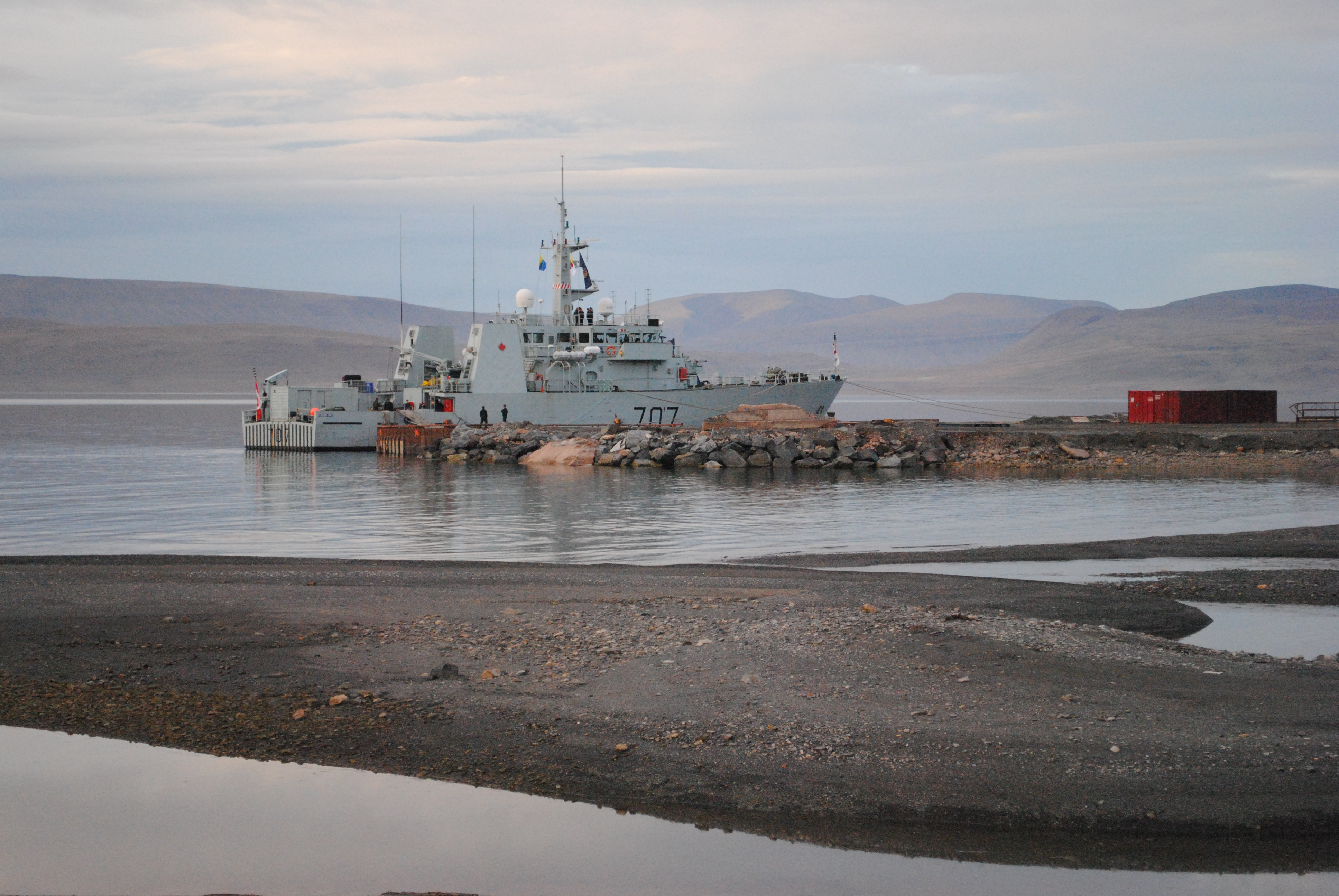The National Shipbuilding Procurement Strategy (NSPS) is Canada’s program to re-equip the Royal Canadian Navy (RCN) and the Canadian Coast Guard (CCG), while supporting Canada’s shipbuilding sector. Public Services and Procurement Canada (PSPC), formerly known as Public Works and Government Services Canada, is primarily responsible for the program. The initiative was announced on June 3, 2010, and is Canada’s largest naval procurement effort since World War II. According to estimates, the program will create $2 billion in revenue annually and 15,000 jobs over a period of 30 years, with a total program cost of $42 billion.
NSPS is divided into three pillars: large vessel construction; small vessel construction; and vessel repair, refit, and maintenance. Large vessel construction has received the most attention and is comprised of six on-going projects.
Combat vessels
The Arctic/Offshore Patrol Ship (AOPS) and the Canadian Surface Combatant (CSC) projects make up the combat package of the NSPS. These projects are managed by Irving Shipbuilding Inc., based in Halifax.
The AOPS are designed to conduct armed sea-borne surveillance of Canadian waters and the Arctic. The construction contract was awarded in January 2015 and initial delivery is set for 2018, with a total project cost of $3.1 billion. The six AOPS will replace the 12 existing Kingston-class coastal defence vessels, which are old and suffer from chronic engine problems.
The CSC will replace the RCN’s fleet of Iroquois-class destroyers and Halifax-class frigates. The cost of the 15 CSC warships, originally approved at $14 billion, is now estimated to be $30 billion. The increase was caused by a design phase that made the CSC more expensive than the original planned cost of the entire NSPS. In 2015, former Defence Minister Kenney announced that, due to inflation and rising costs, the number of CSC vessels Canada will purchase might fall from 15 to 11. The CSCs are expected to enter service in 2025.
Currently, DND and PSPC are conducting an evaluation process of potential warship designers and combat systems integrators for the CSC. According to the criteria, the vessel must be at least 90m long; have surface-to-air and surface-to-surface capabilities; a primary armament of at least 57mm calibre; long- and medium-range radar; a helicopter flight deck; and torpedoes—including other features. Prospective contractors include DCNS Technologies, ThyssenKrupp, BAE Systems, Saab Australia, and Lockheed Martin.
Support vessels
The Joint Support Ship (JSS) project was first initiated in 2006 with the vessels set to be operational by 2012. These were to replace the RCN’s existing supply ships. In 2008, the JSS project was derailed due to a lack of funding.
In 2014, the RCN’s two supply vessels, HMCS Protecteur and HMCS Preserver, ran into significant difficulties. The Protecteur was damaged in a fire and was pushed into early retirement. The Preserver continued to be hampered by electrical problems and was prematurely withdrawn from service in 2014, although it had undergone a major refit in 2005. Originally, the two ships were scheduled to retire in 2017. Due to the sudden absence of supply vessels, the RCN has received logistical support from the Chilean and Spanish Navies.
Construction of the new support ships is to commence in 2017. The first JSS vessel is expected to be operational by 2020 and the second by 2021. Regardless, the Davies Shipyard was contracted to convert a container ship to function as a support vessel in the interim, but this effort has been obstructed by Seaspan and Irving shipyards, who are resistant to having the Quebec-based company within the NSPS process.
Coast Guard vessels
The three remaining programs for the Canadian Coast Guard are managed by the Seaspan Vancouver Shipyards Company. Construction of the Polar Icebreaker was originally scheduled to start in 2013 with completion expected by 2017, but this was delayed because the JSS project was given priority due to the early retirement of the RCN’s naval support vessels. The icebreaker is expected to arrive in 2022 and cost $1.3 billion.
Construction of the Offshore Oceanographic Science Vessel began in 2015, but its delivery date is currently unknown. It will conduct a variety of scientific survey functions, including oceanographic, hydrographical, geological, and fishery missions. The cost of the project is $144.4 million.
The construction of the three Offshore Fisheries Science Vessels is underway with a project cost of $687 million. These ships will conduct scientific research and eco-system-based management. Delivery of these is set for 2017.
Diminished capabilities and expected delays
In its current state, RCN’s capabilities are at a 40-year low point.
Canada’s fleet of four Iroquois-class destroyers is now down to one: one destroyer was sunk in 2007, another was sold in 2015, and the third is undergoing disposal. Prospects for the remaining destroyer, the HMCS Athabaskan, look dire. In October 2015, one of the engines failed while en route to participate in Exercise Trident Juncture. Earlier that year, it broke down off the coast of Florida and later in the Caribbean due to engine problems. As a result, Athabaskan’s 2017 retirement has been expedited. This means a temporary loss in extensive command and control systems, as well as long-range maritime radar capabilities. When coupled with the absence of supply vessels, this means that Canada temporarily has no blue-water capabilities.
Further delays are expected because the Seaspan and Irving shipyards have needed to reinvest in and rebuild facilities that were shut down during the decades where there was no shipbuilding for the Navy or the Coast Guard. Delays in procurement usually mean an increase in costs. If one project is delayed, subsequent projects cannot be started on time. Additionally, projects are usually timed to coincide with the retirement of existing vessels. If the delivery is late, this means that the existing vessels need to undergo life-extension programs and possibly modernization. The older a vessel is, the more maintenance and refurbishment is required, which negatively affects the cost-utility value of maintaining it. Currency inflation makes such delays particularly toxic, especially when Canada’s defence budget is already stretched thin.
Despite the current progress on the NSPS, officials in the Canadian military remain concerned about funding for the NSPS. To the detriment of naval procurement, the long war in Afghanistan attracted funds away from the Navy to re-equip the Canadian Army with new military hardware. Many projects are already over budget and behind schedule, such as the AOPS and the CSC. The Navy must also compete for funding as the Air Force begins its expensive procurement of the CF-18’s replacement.
In sum, Canada’s largest naval procurement program since World War II will be put to the test, as expenditures increase, projects are delayed, capabilities lost, and a competition for funding ensues—all within a constrained economic climate.
Photo courtesy of Corporal Anthony Chand (Canadian Armed Forces).




